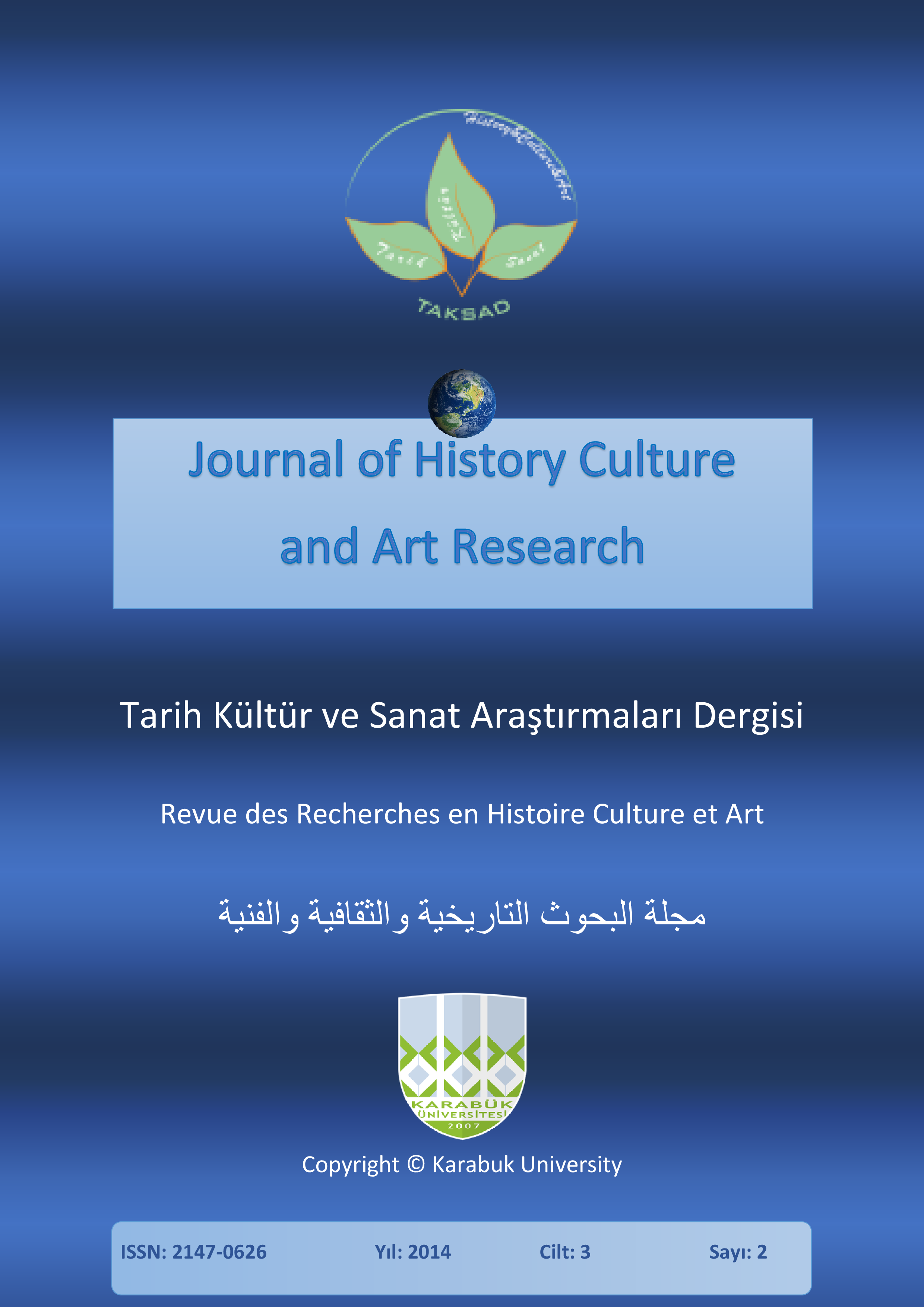<b>Social Mobility and Its Discontents: The Center-Periphery Cleavage of Turkey</b>
Anahtar Kelimeler:
Center periphery cleavage- Justice and Development Party- Social mobilityÖzet
Social Mobility and Its Discontents: The Center-Periphery Cleavage of Turkey
Abstract
This study analyzes effects of the center-periphery cleavage on the relationship between state and religion in Turkey during the period of 2002 and 2012. The confrontation between center and periphery is one of the most important social cleavages underlying Turkish politics that has lasted since the late Ottoman period. This study suggests that the social cleavages between the center and the periphery are still prominent factors shaping discussions on the state’s interaction with religion. That the periphery has gained more social capital since the 1980s has fueled these discussions. In recent years, the Republican People’s Party, the armed forces, and the higher judiciary have represented the centrist coalition, while the Justice and Development Party has established itself as the main representative of the periphery. During this period, the previous elites have lost more power on the state level, a development that can be read as the conservative periphery displacing the secular center to some extent.
Referanslar
Alkan, Turker (13 June 1997). Radikal.
Bayramoglu, Ali (2006). Modernity does not Tolerate Superstition: the Religious and
Seculars in the Democratization Process. TESEV Publications: Istanbul.
Candar, Cengiz (28 June 1997). Sabah.
Carkoglu, Ali (2007). A New Electoral Victory for the ‗Pro-Islamists‘ or the ‗New
Centre-Right‘? The Justice and Development Party Phenomenon in the July 2007
Parliamentary Elections in Turkey. South European Society and Politics, 12:4, 501-519.
Carkoglu, Ali (2008). Ideology or Economic Pragmatism?: Profiling Turkish Voters in
Turkish Studies, 9:2, 317-344.
Gole, Nilufer (1997). Secularism and Islamism in Turkey: The Making of Elites and
Counter-Elites. Middle East Journal, 51:1, 46-58.
Heper, Metin (2013). Islam, Conservatism, and Democracy in Turkey: Comparing Turgut
Ozal and Recep Tayyip Erdogan. Insight Turkey, 15:2, 141-156.
Hurriyet Daily News (18 June 2013).
Kubicek, Paul (2009). The European Union and Political Cleavages in Turkey. Insight
Turkey, 11:3, 109-126.
Kuru, Ahmet T. (2013). Muslim Politics Without an ‗Islamic‘ State: Can Turkey‘s Justice
and Development Party Be a Model for Arab Islamists? Policy Briefing, Brookings Doha
Center Publications. February 2013.
Mardin, Serif (2006). Religion, Society, and Modernity in Turkey. Syracuse University
Press: New York.
Onis, Ziya (2013). Sharing Power: Turkey‘s Democratization Challenge in the Age of the
AKP Hegemony. Insight Turkey, 15:2, 103-122.
Ozbudun, Ergun (2012). Turkey‘s Search for a New Constitution. Insight Turkey, 14:1,
-50.
Rabasa, Angel and F. Stephen Larrabee (2008). The Rise of Political Islam in Turkey.
Pittsburgh: RAND Corporation.
Simmel, Georg (1957). Fashion. American Journal of Sociology, 62:1, 541-558.
Toprak, Binnaz (1981). Islam and Political Development in Turkey. Netherlands: Brill.
Warhola, James W. and Egemen B. Bezci (2010). Religion and State in Contemporary
Turkey: Recent Developments in Laiklik. Journal of Church and State, 52:3, 427-453.
İndir
Yayınlanmış
Nasıl Atıf Yapılır
Sayı
Bölüm
Lisans
Tarih Kültür ve Sanat Araştırmaları Dergisi'nde yayımlanan tüm çalışmalar Creative Commons 4.0 CC-BY lisansı ile lisanslanmıştır.
Bunları yapmakta özgürsünüz:
- Bu eseri her boyut ve formatta paylaşabilir — kopyalayabilir ve çoğaltabilirsiniz.
- Materyalden Adapte et — karıştır, aktar ve eserin üzerine inşa et
- her türlü amaç için, ticari amaç da dahil
Alttaki şartlar altında:
Atıf — uygun bilgiyi, lisansa linki, and ve değişiklik yapıldıysa değişiklik bilgisinivermelisiniz. Sizi veya kullanımınızı lisansörün onayladığı bilgisini içermemek kaydıyla, size uygun şekilde bu işlemleri gerçekleştirebilirsiniz.
AynıLisanslaPaylaş — Eğer materyali karıştırdınızsa, aktardınızsa ya da materyalin üzerine çalıştınızsa, ancak aynı lisans ile dağıtabilirsiniz.
- Ek sınırlamalar yoktur — Lisansın izin verdiği hakları başkaları üzerinde kanunlarla ya da teknolojiyikullanarak sınırlayamazsınız.







